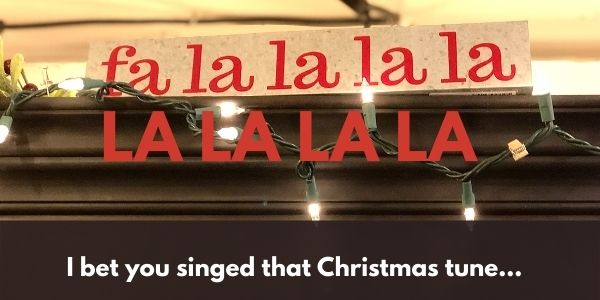Learning how to write your song is hard.
Is it time to shine and feel the inspiration to write the next hit single? Or maybe you just want to make a fun little jingle with your friends and family.
Whatever it is, that you’re here means that you want to make your song decent…
So it’s crucial to learn the essential rules of songwriting, so you have a basic idea of how to structure your song to make it sound good.
And that’s why in this guide we are going to go over the essentials on how to write a song so that you can get better and write a song that you can feel proud of (or at least better than having no clue where to start…)
So let’s get started.
1. Figure out the main idea of your song

The very first thing you want to do is find the central idea of your song.
Trust me, this is the most important because…
Having a clear idea of what you’re going for will guide you on how to structure your song to even what types of lyrics you will use.
And you want to be specific. If you said you want to write a love song, that could be many scenarios. For example:
- Is it a love story where he’s sipping at a local Starbucks?
- It is a heartbreak at your local grocery store?
- Is it a newfound love interest in rock climbing?
Before you can write your hook, figure out the song structure, and all the cool rhymes you’re going to add…
You need a central idea of where to place.
The ONE thing which the entire thing your song will revolve.
And this is important because you don’t want to be bouncing all over the place.
You don’t want to go from talking about your first crush in high school to how cute your puppies are (even if they are the cutest…)
With only on average 16-20 sentences in a song, you have to be very concise in what you want to interpret.
Hence, a good general rule of thumb is one topic for one song.
So have your song idea ready before you start with anything. And the best way to do that is to write 5 main ideas on what you want to talk about and just pick the one you’re feeling great about.
You can always change it, but having some options to choose and pick your favorite one is a classic way to start.
2. Figure out the hook of your song
This goes hand in hand with finding the main idea of your song, but the next thing you want to focus on is finding the “hook” of the song.
This is the ONE thing on which your song revolves around.
Think of it this way.
If the main idea is what your song is about, then the hook is what the audience will remember about your song.
You know how you’re jamming in the car and you may not know any lines, but you could sing that one line that’s always repeated.
That’s usually the hook of the song.
Now it’s not always, but most songs do it and that’s because…
The hook is what the selling point of your song is.
It’s the bread and butter.
It’s what your complete song should be focused on.
Here are some hook ideas so you will know what exactly what I’m rambling on:
- “Baby” by Justin Bieber
- “My Way” by Frank Sinatra
- “WAP”
Yes, even the last one is a hook line (if you know it…) that has become popular in TikTok.
But you get the idea.
The hook is the central idea and selling point of your song that everyone will remember.
So how do you come up with a good hook?
Experimentation and research, along with taking spontaneous notes.
That means you want to be on the lookout for anything that might be a hook and joy it in your journal.
You know when inspiration strikes you?
It’s kind of like that, but already putting in the work and research.
99% of the time, it’s going to be from putting in the hard work and then getting that inspiration when you’re taking a shower.
And then sometimes you have that 1% where that hit song inspiration happens randomly doing nothing.
But most of the times it would be like these scenarios:
You’re writing songs about heartbreak and then you get a text message from your best friend who gives you an idea of what happens when your wife goes to the groceries and then bam. Your next song’s title:
“When My Wife’s Gone…”
Or you talk about the philosophy of love with another friend and then talk about how Cleopatra and her seduction strategies were amazing and then bam..
“Love And Domination”
You never know where these ideas will lead, but it’s this process which leads to amazing song hooks.
3. Choose A Song Structure

Unless you are a songwriter, you will not notice many songs are based on a certain song structure.
There are certain foundations used for song structures that are used by many famous musicians, even for contemporary songs.
Like, for instance, I never knew that there were the same amount of syllables in both verses until I learned about song structure or there was a certain rhyming pattern.
For example, if you see a pattern like AABB, this means that the letters A rhyme with each other and the letters B rhyme with each other.
And then there are the song structures where it’s:
- Verse-Chorus-Verse-Chorus
- Verse-Verse-Chorus
- Verse-Chorus-Bridge
- Etc.
You want to look at the different ways you structure things so you can know how to structure your song. It’s like structuring your essay on your specific song topic to best resonate with it.
I’ll create a simple verse-chorus song with an AAAA rhyme scheme so you can see what I mean below with the syllable count in parentheses and the rhymes in bold:
Example of Song Structure
VERSE
I saw a cat (4)
Who was wearing a hat (6)
And a little bit fat (6)
Laying on a mat (5)
CHORUS
It was eating fish (5)
On it’s fancy dish (5)
The cat looked so happy (6)
Eating under a tree (6)
VERSE
Now I saw a dog (5)
Playing with a big log (6)
As I started to walk (6)
He vanished in the fog (6)
CHORUS
It was eating fish (5)
On it’s fancy dish (5)
The cat looked so happy (6)
Eating under a tree (6)
This song is random, but it’s about me watching a cat eat and a dog playing with a log (very creative, I know…)
But if you notice some things that mostly the syllables match (plus minus 1) and that it follows the same rhyme scheme for the verses.
The best way to go about it is to find your favorite song and see what song structure they use… and take inspiration from it.
Don’t just outright copy it (unless it’s for practice) but analyzing from respected artists is one of the best ways to level up in songwriting.
4. Writing The Chorus
The chorus is your bread and butter. This is where you shine in your song because this part will be the climax of your song.
It’s also the one that your audience will remember.
Think about it this way.
If there’s going to be one line audiences remember, 80% of the time it’s going to be in the chorus.
This is because this is where the most excitement happens and the energy levels change.
So how should you structure your chorus?
There’s a lot of ways, but the most common way is to play higher notes with most chords.
This should also reflect what you’re trying to convey.
If you’re writing a love song, for example, did:
- A specific moment happens in real life?
- Were you feeling certain emotions?
- Was there a common saying that resonated with you?
For example, you can go to “Can You Feel The Love Tonight…” by Elton John where it’s incredibly powerful…
Or you can go like James Arthur “Can I Be Him?” where he ends it on a low note.
But there are two things to notice with these songs:
- The hooks are in the chorus
- And it’s telling about ONE specific moment.
If you aren’t sure what to put in your chorus, it’s always safe to start with your hook.
And then if you’re not sure, try to elaborate on why that hook captivated you.
But the second part is also incredibly important. For example, James Arthur is trying to captivate a moment that people have shared in a specific feeling.
And remember to have fun.
Although it can be an important message you’re trying to share with other people, enjoy this creative process, otherwise it would be a torture for you.
5. Write Your Melody

Once you have a rough draft of your chorus, you want to create a rough draft of your melody. The melody is important because that’s what listeners will remember first.
It is like how you can hum your favorite song even if you forget the notes and lyrics.
That’s why some people start with working on the melody first, because it’s what people will remember first.
So how do you create a melody when you’re writing your song?
Just start humming and see what sticks.
That is one of my favorite ways to start because you’re just letting all your creativity unleash. If you want to get more technical, you can start analyzing the songs of your favorite song and see what they do for the melody for each lyric which I recommend for the intermediate and advanced songwriters.
This is because you can pick up little nuances you might’ve missed when you were just creating melodies you might’ve missed that your beginner self wouldn’t have picked up.
But otherwise, start humming and playing chord progressions and see what works.
6. Write Your Chord Progressions
Now we’re getting somewhere with a melody and a chorus, but now it’s time to write the actual chord progressions.
Even if you have never played an instrument, chord progressions are a lot easier than you think.
If you look closely, many pop songs only use 4 chords in their entire song and they just repeat it over and over.
Writing chords doesn’t have to be complicated.
For example, here’s a simple chord progression in the key of C:
- C-Fm-Am-G (1, 4, 6, 5)
What this means is that in the key of C (only white keys) you play these 4 same notes over and over from the beginning of the song till the end and you can have a good sounding song.
Heck, if it’s too complicated, you can just play the single notes on the piano without touching chords.
Here are some of the famous songs that use that same chord progression:
- Sting–Every Breath You Take
- The Beatles–Octopus’s Garden
- Whitney Houston & Dolly Patron- “I will always love you”
But once you get more experienced, you can try out:
- Different chord progressions
- Different timings
- Different intonations
And see what sounds good.
Chord progressions don’t have to be complicated, especially when you’re starting out in writing a song.
7. Write Your Verses

Now that you have a nice solid foundation for the song, it’s time to create your verses.
If the chorus is the climax, then your verse is setting the story and building up to the climax.
It’s the actual details of the song that can make it truly unique.
Some things you can do in the verse are:
- Set the environment
- Set the emotions
I’d say the beginning of the verse is almost as important as your chorus, and this is the reason:
You only have 5 seconds to grab the attention of your listener.
It’s like imagining reading a book with an amazing story and climax, but the intro is long.
Sure, it takes time for world-building, but if it’s too slow and boring, most people won’t get to the exciting part of your book.
It’s the same with the beginning of your verse.
You want to make sure that it grabs the attention of the listener so that hopefully they can listen all the way to the chorus.
When you’re writing your verses, you also want to make sure that all the syllables match up.
So, for example, if my verse was something like:
- I see the sky is blue (6) A
- The cow goes moo (4) A
- But now I see a pig (6) B
- Eating a long twig (5) B
If you see that my first line is 6, the second is 4 syllables, etc.
What happens is when you write the second verse after the chorus, you want them to have the same amount of syllables plus minus 1.
And if you don’t, it’s going to sound a bit off.
The same thing applies with the rhyming scheme. You can see that my rhyming scheme is AABB, which means the first two lines rhyme (blue and moo) and the last two lines rhyme (pig and twig)
Now, these rules can be broken, but you want to be very careful in how you do it because it can make your song sound off.
8. Write Your Bridge

The bridge is honestly one of my favorite parts. And the reason it’s one of my favorites is because you can do whatever the hell you want.
Now, not all songs have bridges, but that isn’t stopping you from creating one!
Jokes aside, a bridge is fun because this is where you can break all the rules. You don’t have to follow the count syllables or the rhyme scheme, and it is the only place where it can be completely different.
You can change the rhythm.
But the one thing you have to keep in mind whenever you create a bridge is…
Does it add more to the story?
If it doesn’t advance the story or create a twist, then your bridge is practically useless.
It’s like if you’re writing a love song and then the bridge was talking about rubbing your dog’s belly… and then you go back to the chorus about why you love her.
Sure… you could do something where it makes it related like that’s the dog of your lover, but it’s a bit out there that the listeners would be confused.
But here’s where it could work:
- If that dog was the reason you met your lover
- If your lover passed away and you’re taking care of her dog because it’s something she left behind
- Or the dog is a symbol for something like growing and starting your family together
Did you see what I did there?
I made a bridge to make sure it was:
- Advancing the story
- A twist
- Or a symbol
Let’s say this was your typical “I love you baby” love song.
For the first bullet point, it adds to the song because you advance the story of how you guys met. The second point could be a twist because you may not know she passed away until the bridge and the complete song can have its meaning completely changed. The third point can be a bit of a stretch, but if the song was your typical love song who was hesitant about having a family, getting a dog could be the start of something.
But you see what I did there at each point?
I added depth to the story.
And that’s exactly what you want to do on your bridges. It’s adding depth to make your story and lyrics more interesting.
9. Write your intro and outro
When you’re writing your song, the intro and outro are still important, but not as important as the other sections.
The reason it’s important is that it is the first and last portions of the song that your audience will remember.
If the intro is what will make your audience listen long enough for your lyrics, then the outro is ending how they feel about the song.
So ideally, you want to think about the emotional feeling you want your listeners to have when they are listening to your song. But don’t make your intro too long because with our attention spans nowadays, people are impatient to wait for your chorus.
10. Putting It All Together

Once you finish each part of your song, whether it’s simple with someone singing and you playing the chords, or something complex, it’s time to put it all together!
You can use any DAW to assemble. If you’re using a mac, you can always get started with GarageBand or use something like Logic or Ableton depending on what you would like.
Or you can just record it.
And put your music out somewhere and upload it. Sure, you can always put it on private so no one knows, but having it stored somewhere is something great because you can always look back on your journey.
Frequently Asked Questions
How long does it take to write a song?
It depends. It can take weeks writing and rewriting your song and tweaking your melody, or you can take 14 minutes like Beyonce when she made her song “Diamonds” that became a hit.
How do you write a song for beginners?
I recommend starting with the verse-chorus structure with a simple rhyme scheme about an experience you can relate to. Those would be the easiest to write and draw inspiration from.
Can anyone write songs?
As long as you can write in a language, then you can write songs. And if you’re asking if you can become better as a songwriter, it’s 100% possible with the right strategy and execution.
Conclusion
I hope you learn something about how to write a song. It’s art and a bit of science too. It’s when you learn the rules, when you can start breaking them. If you have questions, you can always drop a question below.
Have fun writing!
Cheers,
Anthony Nebel







